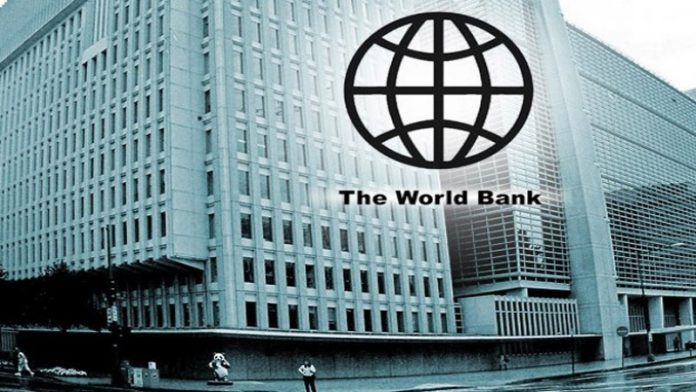WASHINGTON: Recovery in a handful of countries will boost global growth slightly this year but the outlook is riddled with potential pitfalls that could derail this tepid upswing, the World Bank cautioned the other day.
A renewal of trade tensions, which eased recently with announcement of an initial agreement between the United States and China, would erode the modest progress and could spread quickly beyond the two economic powers.
In its latest Global Economic Prospects report, the World Bank projected that the global economy will grow by 2.4 percent this year, just one tenth more than 2019 but slower than the 2020 forecast released in June.
Despite the positive spin, the report — titled “Fragile, Handle With Care” — cuts the forecasts for nearly every country except the United States compared to the last edition in June.
And growth is still not fast enough to meet targets for pulling more people out of poverty.
Most major economies are poised to see sluggish growth in 2020.
The tenuous global rebound relies almost entirely on a few large emerging market economies that are expected to accelerate after a disappointing 2019, or in the case of Argentina, contract at a slower rate.
The United States and China together account for nearly 40 percent of global Gross Domestic Product (GDP) and nearly a quarter of global trade. But with an improvement in their nearly 20 old trade dispute, they will be less of a drag on growth even as both economies slow.
The US economy is projected to grow just 1.8 percent after 2.3 percent growth in 2019, the World Bank said.
China´s GDP will expand by less than six percent for the first time since 1990, with an expected 5.9 percent growth rate.
“Growth has decelerated more than previously expected amid cooling domestic demand and heightened trade tensions,” the WB report said.
The Euro Area, hit by a slowdown in Germany and the threat of Brexit, “has deteriorated significantly,” with several economies “on the verge of recession at some point last year.”
The expansion is set to slow further to just 1.0 percent this year before picking up in 2021.
Japan also is “suffering from acute weakness in manufacturing and exports” and the economy will continue to slow with growth of just 0.7 percent expected.
Emerging markets –
Emerging market and developing economies (EMDEs) have been the boost to the global economy through the sluggish times but most face their own rocky road with a third are projected to decelerate this year.
As a result, the global uptick is not broad-based and “is largely predicated on a rebound in a small group of large EMDEs, most of which are emerging from deep recessions or sharp slowdowns,” the report said.
“Indeed, about 90 percent of the pickup in EMDE growth in 2020 is accounted for by just eight countries — Argentina, Brazil, India, Iran, Mexico, Russia, Saudi Arabia, and Turkey,” it said.
“Excluding these eight countries, aggregate EMDE growth would experience almost no acceleration.”
Argentina, which contracted 3.1 percent in 2019, is projected to slow by 1.9 percent this year while Brazil and Mexico should expand by 2.0 percent and 1.2 percent, respectively, far faster than last year.
India too is expected to gain traction, with growth of 5.8 percent, while Turkey´s 3.0 percent expansion will come after no growth in 2019, the report said.
In sub-Saharan Africa, the news is looking up, with a solid increase in GDP growth expected this year.
But the World Bank cautions that, even with the improvement, “per capita growth will remain well below long-term averages and far from sufficient to meet poverty alleviation goals.”
The Middle East is expected to see growth jump to 2.4 percent this year after virtually no growth in 2019.
Downside risks predominate
The World Bank warns that “downside risks predominate” but since the cutoff for the forecasts was December 20, prior to the recent outbreak of hostilities between Iran and the United States. So it is too soon to tell what influence that might have.
The major concern is the potential for a resurgence of trade tensions between the United States and China.
A “renewed disruption to US-China economic ties could result in damage not only to these two economies but to the rest of the world,” the report warned.
In addition, “record-high debt levels and fragile public finance positions” leave many countries vulnerable to shocks or a sudden increase in interest rates.























